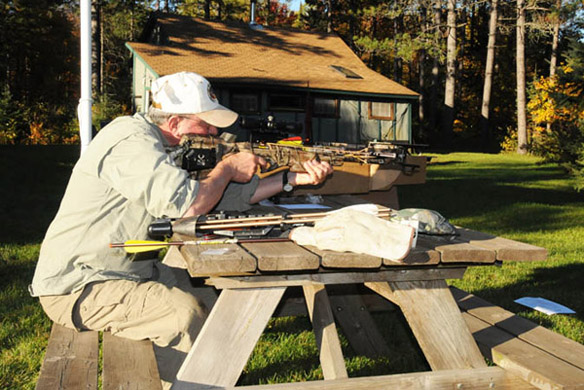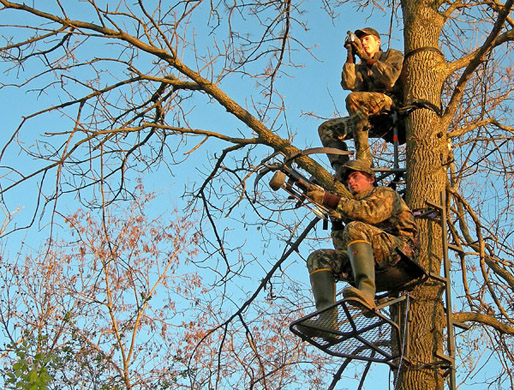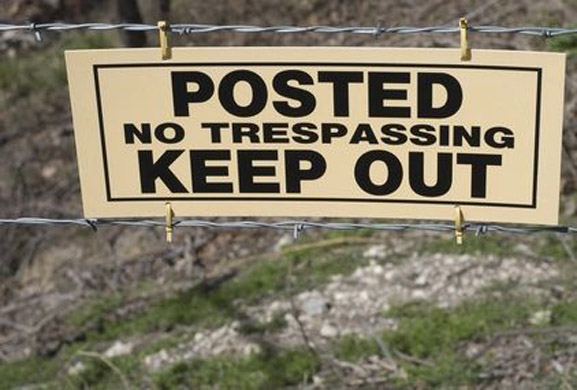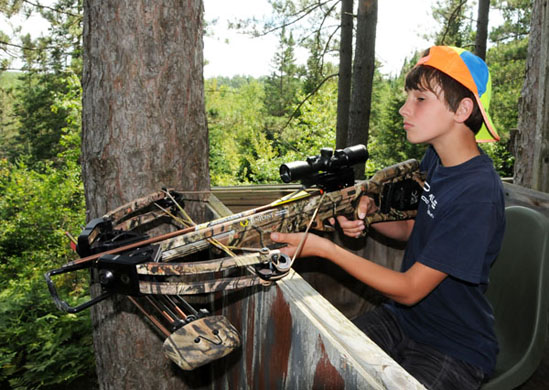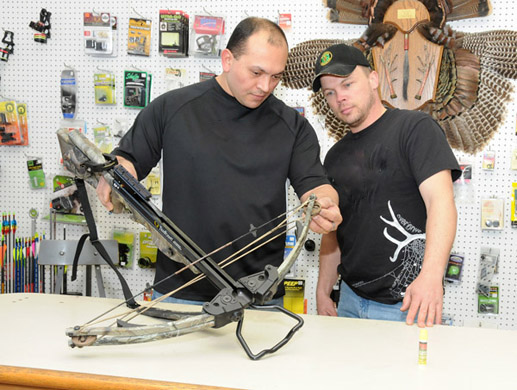LAST UPDATED: May 1st, 2015
Even though the sky hasn’t fallen or Armageddon unleashed on the 19 states that now include crossbows without restrictions during archery season, we still hear dire predictions and gloomy forecasts of buck overkills and crowded woods in the years ahead. Pfft. Stop it. Critics need to start offering some facts and figures to support their predictions if they desire any credibility. In the meantime, their fears make me think of this quote by Mark Twain: “I’ve seen many troubles in my time, only half of which ever came true.”
Crossbows such as the new Carbon Express Intercept are an effective hunting tool; despite mixed emotions regarding their use during archery seasons.
The fact is, even though bowhunting license sales are climbing or relatively stable in most states, overall hunter numbers are stable or declining. Further, no matter how much deer hunting opportunity states offer, few hunters shoot more than one deer annually. As a result, hunter numbers and deer harvests will not skyrocket as more gun-hunters or lapsed archers take up crossbows. Sure, we’ll see some increases at times, but not enough to notice, except in our imaginations. (carbon express crossbow)
Performance differences between compound bows and crossbows aren’t as obvious as those between compound bows and traditional longbows or recurve bows.
Consider the Michigan Department of Natural Resources’ recent assessment of the crossbow’s impact on the 2009-2011 deer seasons since it was legalized in 2009. Even though Michigan’s bowhunter numbers increased 13 percent and the state’s archery kill increased at the same rate, the overall number of gun and archery hunters declined 7 percent and the total deer kill fell 12 percent. True, the proportion of archers using crossbows increased from 19 percent statewide in 2009 to 37 percent in 2011. Also true, the number of crossbow hunters more than doubled from 57,000 in 2009 to 119,000 in 2011. Further, the deer kill by crossbow hunters increased from about 25,000 in 2009, to 38,000 in 2010 and to 55,000 in 2011. That accounted for about 21 percent of the 117,633 bow-kill in 2009, 33 percent of the 117,180 bow-kill in 2010, and 42 percent of the 131,615 bow-kill in 2011.
At latest count, 19 states and five of 12 Canadian provinces allow crossbows to be used during their big-game archery seasons.
Even so, crossbow hunters notched basically the same success rate all three seasons: 36.4, 35.6 and 38.8, respectively. In other words, the increased kill was basically the result of more bowhunters in the woods during archery season. But those aren’t extraordinary success rates. During Michigan’s 2008 season – the year before crossbows were legalized – bowhunters notched a 42 percent success rate when bagging 125,035 deer. But don’t lose perspective. Michigan’s bow kill actually declined in 2009 and 2010 before hitting 131,615 in 2011. Even then, that 2011 total is third in Michigan history. It fell short of a record 142,615 in 1999 and 132,130 in 1995. Likewise, Michigan’s recent archery buck kills didn’t blast into orbit. True, the buck bow-kill rose 9 percent from 64,580 in 2009 to 70,148 in 2011, but the antlerless kill rose 16 percent from 53,053 to 61,466.
Meanwhile, the crossbow’s overall impact on Michigan deer hunting remains modest. Consider:
— In 2009, crossbow hunters killed 24,882 deer, or 5.6 percent of the 444,231 gun and bow total.
— In 2010, crossbow hunters killed 38,310 deer, or 9.2 percent of the 417,850 total.
— In 2011, crossbow hunters killed 54,902 deer, or 13 percent of the 422,014 total.
Likewise, Indiana didn’t implode when it fully opened its archery season to crossbows last fall. The result? Crossbow hunters shot 8,452 deer, or 6 percent of 2012’s overall statewide kill. Other Hoosier archers arrowed 27,580 deer in 2012, about 800 more than they killed in 2011.
Let’s face reality and look outside our relatively small, insulated world: Most hunters, the general public and deer themselves don’t care if an arrow is shot by a crossbow or compound bow. Or a longbow or recurve for that matter. Performance differences aren’t dramatic, anyway. In contrast, if anyone wants to see an unmistakable performance difference, watch most archers alternate between a longbow and compound bow at 25 yards. Compounds have made archery so much easier the past 40-plus years that many – if not most — bowhunters today have never pulled a hunting bow to full draw without help from pulleys, cams and cables that reduce a compound’s held weight by 80 percent.
Even though crossbows boosted Michigan’s archery-license sales and increased the deer kill after their inclusion in 2009, a Michigan DNR study found their success rate is actually lower than those posted by compound-bow hunters.
Even so, crossbow foes say they don’t want to “share the woods” with crossbow hunters. Really? Why? That implies bowhunters now welcome everyone toting a compound, recurve or longbow. If access where you hunt is controlled now, it will be just as restricted – if not more so – if crossbows were legalized for everyone, not just old people and the injured or handicapped. Like it or not, it’s time crossbow opponents abandon their emotional arguments – much as they advise anti-hunters to do with theirs – and accept the obvious and inevitable: The reason crossbows are increasingly common during archery deer seasons is that many hunters welcome them.
Two things haven’t changed as crossbows became more common: Few deer hunters kill more than one deer a year, and landowners still control access to hunting properties.
In 2001, Ohio, Arkansas and Wyoming were the only states to allow crossbows during archery season. But at latest count, 19 of 50 states (38 percent) and five of 12 Canadian provinces (42 percent) have no restrictions on crossbows during big-game archery seasons. Three other states allow crossbows during part of their archery season. Crossbow use among older hunters has also increased in states still clinging to age restrictions. Consider Wisconsin: Since 2002 – when bowhunters 65 and older were first allowed to use crossbows during archery season – participation by 65- to 76-year-olds increased 66 percent. No other age group showed such increases. I thought we all wanted to retain hunters. That should be good news, not cause for alarm.
And what’s behind these changes? Contrary to conspiracy theories, the chief force isn’t corporate greed. The fact is, hunting’s most dominant age group – baby boomers – is aging and asking for more crossbow opportunities so they can keep hunting. Crossbows also provide another revenue stream for archery pro shops. Although crossbow hunters typically don’t shoot as many arrows as compound bow shooters, their bows still require professional repairs and maintenance. In this era where we must sometimes drive an hour to visit an archery-specific store, crossbows might be the difference between a shop staying in the black or falling into the red and out of business.
One advantage of crossbows is that the same bow can be used by grandfathers and grandsons, making it easier for them to shoot together in summer and hunt together in fall when the youth needs a mentor.
Meanwhile, wildlife agencies are trying to recruit and hold onto older hunters to boost license sales, while encouraging these potential mentors to help recruit new, younger hunters. As a result, some agency leaders have quit disguising their impatience with crossbow opponents. Consider Matt Knox, deer project coordinator for the Virginia Department of Game and Inland Fisheries. Virginia legalized crossbows for its archery deer season in 2005. Knox believes crossbow opponents have bored everyone with their attacks. “We decided eight years ago that we were done fighting all their accusations,” Knox said in an interview. “Their arguments are emotional and can’t withstand scrutiny, but they never stop repeating them. It’s embarrassing we have to keep fighting crossbow wars. We’re all deer hunters. Some people use a .30-06 and some use a .308. Is your rifle superior to mine?”
Knox said crossbows also help manage deer in urban areas, and they’re user-friendly for older hunters. “No matter how we analyze the issue, crossbows are a winner,” Knox said. “They give more people a chance to hunt deer, and they help people become proficient much faster than with a regular bow. Those are good things. It doesn’t matter to us which weapon puts a hole in a deer as long as it’s accurate and lethal. Crossbows are both.” Besides, crossbows have long inspired controversy, in literature as well as life. The sailor who doomed his ship by killing an albatross in Samuel Taylor Coleridge’s “The Rime of the Ancient Mariner” (1797–98) used a crossbow. In his novel “The White Company” (1891), Sir Arthur Conan Doyle ridiculed the crossbow’s use in “manly and true” 14th Century warfare. In the book, a knight insults a crossbowman, saying: “With all respect to you and to your bow, I think that is but a woman’s weapon, which a woman can point and loose as easily as a man.” Some folks also think Pope Innocent II issued an edict in 1139 that banned using crossbows against Christians in warfare. Some historians discount the story, believing it more likely the pope merely banned dangerous shooting competitions like the one immortalized by William Tell, in which he shot an apple off his son’s head with a crossbow.
Crossbows require professional maintenance and repairs. In this era where we must sometimes drive an hour to visit an archery pro shop, crossbows might be the difference between a shop staying in the black, or falling into the red and out of business.
Closer to home, this debate reminds me of the early to mid-1970s when traditional archers opposed people using compound bows during archery season. They considered recurves and longbows the only true bows. In fact, many of them have never accepted compound bows, and only now align themselves with compound-bow shooters to oppose crossbows. Our archery seasons survived that nonissue. And if crossbows become legal for all archers nationwide, archery seasons will survive this nonissue too.
Editor’s Note: Patrick Durkin is a free-lance writer who covers outdoors recreation for the Watertown Daily Times. Write to him at 721 Wesley St., Waupaca, WI 54981; or by e-mail at “[email protected].”

 By
By 
